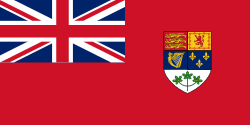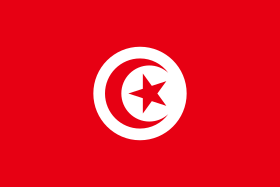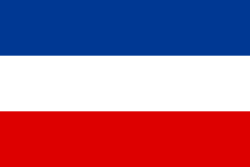1932 Maccabiah Games
 | |||
| Nations participating | 27 | ||
|---|---|---|---|
| Athletes participating | 390 | ||
| Opening city | Tel Aviv, Mandatory Palestine | ||
| Opening ceremony | March 28 | ||
| Closing ceremony | April 2 | ||
| Officially opened by | Meir Dizengoff | ||
| Main venue | Maccabiah Stadium | ||
| Summer: | |||
| |||
| Winter: | |||
| |||
The 1st Maccabiah (aka The Maccabiah[1] and the White Horse Olympics[2][3]) (Hebrew: המכביה הראשונה or Hebrew: המכביאדה[1]) was the first edition of the Maccabiah, which was held in Mandatory Palestine from March 28 to April 2, 1932. The games were in commemoration of the 1800th anniversary of the Bar Kokhba revolt, a major rebellion by the Jews of Judaea Province against the Roman Empire. Despite many obstacles and setbacks, the first Maccabiah was regarded as a great success.
History


The 1st Maccabiah was the result of almost two decades of attempt by Yosef Yekutieli to allow Jews in Eretz Yisrael to participate in international athletic competitions. It wasn't until the Maccabi World Congress in 1929 that his proposal was accepted. The games officially opened on March 28, 1932.
Due to severe lack of funds, the construction of the Maccabiah Stadium did not start until a few short weeks prior to the opening ceremony.[4] The land of the stadium was allocated by the British Government which loaned it to Maccabi.[4] The stadium was completed on the night before the opening ceremony.
In the days leading to the opening ceremony, Tel Aviv faced a large shortage of hotel rooms;[4] the residence of Tel Aviv were asked to host guests in their own homes[5] following one of the following recommendation: full accommodations, bed & breakfast, or bed only.[6] Hosts also helped out by taking their guests to their events.[6] 1,000s flowed to the Maccabiah: many via cars, bikes, and on foot. Many of the spectators came wearing white suits and blue hats - as one of the largest Zionist events in history.[5] A large ball was held in Beit Ha'am on Ben Yehuda Street in Tel Aviv.[5]
Opening ceremony
390 athletes from 27 countries participated in the first Maccabiah. The municipality of Tel Aviv decorated the streets with greenery and flowers. The city was coated with blue and white banners of the Maccabiah.[5] The parade started off with the participants at the Herzliya Gymnasium marching toward the stadium north of the city.[4] At the stadium, they were greeted by the High Commissioner Sir Arthur Grenfell Wauchope, who approved the games.[4] The parade was led by a convoy of horse riders, including Avraham Shapira. Among those riders was Tel Aviv's mayor, Meir Dizengoff, who rode on a distinct white horse.[3][5] 20,000 spectators were at the opening ceremony. The Maccabiah became known as the White Horse Olympics due to him.[2][3]
Following the parade of nations, a large display of athletics took place with over 2,500 athletes taking part.[3] 120 white pigeons were released - each ten representing one of the Twelve Tribes of Israel.[7][8]
Sports

Events in the first Maccabiah included:
|

The first Maccabiah hosted a large number of competitions despite the large of venues and equipments. In 1932 Tel Aviv still did not have any swimming pools; the swimming competitions and the water polo games at took place in the Port of Haifa in improvised lanes.[11] Spectators watched the swimming competitions from floating rafts on the water.[10] There was no serviceable gymnastic hall; competitions were held on a wooden platform in Rina Garden located on Shalom Aleichem Street in Tel Aviv.[10] The 5,000 and 10,000 meter races took place on the streets of Tel Aviv - a race that took place on mostly unpaved and sandy roads.
Games highlights
A number of athletes did exceptionally well at those games. The United States won 12 gold medals in track & field, four alone won by Harry Schneider, a former New York University football and track player,[9] breaking the previous Olympic record in discus throw.[5] In all three events he beat Dave Adelman, former Georgetown athlete, who took three second places.[9] The two swimmers, Pavol Steiner (Czechoslovakia) and Alfred Gott (from Austria) each broke the record from their countries.[4] The 5,000m won by Mohamed Said from Egypt.[4]
Participating communities

390 athletes from 27 countries participated (not all participated in the games), including over 69[5] Jewish athletes from Arab countries such as Syria, Lebanon and Egypt - including number of Muslim boxers from Egypt participated.[5] A number of individual athletes from "B'nai B'rith" also participated (representing no specific country). Also participating were official British soldiers and policemen.[4] In the first two Maccabiot, only official members of Maccabi were allowed to participate.[5]
The number in parentheses indicates the number of athletes from that delegation.
-
 Austria[4][12]
Austria[4][12] -
 Australia[4][12]
Australia[4][12] -
 Bulgaria[4][12]
Bulgaria[4][12] -
.svg.png) Belgium[4][12]
Belgium[4][12] -
 Canada[12]
Canada[12] -
 Czechoslovakia[4][12]
Czechoslovakia[4][12] -
 Danzig[4][12]
Danzig[4][12] -
 Denmark[4][12]
Denmark[4][12] -
 Estonia[4][12]
Estonia[4][12] -
.svg.png) Egypt[4][12]
Egypt[4][12] -
 Eretz Yisrael[12]
Eretz Yisrael[12] -
 France[4][12]
France[4][12] -
.svg.png) Germany[4][12]
Germany[4][12] -
.svg.png) Greece[4][12]
Greece[4][12] -
 Hungary[4][12]
Hungary[4][12] -
 Latvia[4][12]
Latvia[4][12] -
 Lebanon[4][12]
Lebanon[4][12] -
 Lithuania[4][12]
Lithuania[4][12] -
 Netherlands[4][12]
Netherlands[4][12] -
 Poland[4][12]
Poland[4][12] -
 Romania[4][12]
Romania[4][12] -
.svg.png) Syria[4][12]
Syria[4][12] -
 Switzerland[4][12]
Switzerland[4][12] -
 Tunisia[4][12]
Tunisia[4][12] -
 United Kingdom[4][12]
United Kingdom[4][12] -
.svg.png) United States [12](15)[9]
United States [12](15)[9] -
 Yugoslavia[4][12]
Yugoslavia[4][12]
Medal count
Poland led the scoreboard, with the Eretz Yisrael delegation winning just a single gold medal.
| Rank | Nation | Gold | Silver | Bronze | Total |
|---|---|---|---|---|---|
| 1 | | - | - | - | - |
| 2 | | - | - | - | - |
| 3 | | 12[9] | - | - | - |
| 4 | | - | - | - | - |
| 5 | | 1[5] | - | - | - |
| 6 | | - | - | - | - |
References
| Wikimedia Commons has media related to 1st Maccabiah. |
- 1 2 Torah Aura Productions (2011). Eizehu Gibor: Living Jewish Values (illustrated ed.). Torah Aura Productions. pp. 19–21. ISBN 9781934527245.
- 1 2 Mitchell G. Bard; Moshe Schwartz (2005). 1001 Facts Everyone Should Know about Israel. Jason Aronson. ISBN 9781461627159.
- 1 2 3 4 https://www.jewishvirtuallibrary.org/jsource/History/Maccabiah.html
- 1 2 3 4 5 6 7 8 9 10 11 12 13 14 15 16 17 18 19 20 21 22 23 24 25 26 27 28 29 30 31 32 נפתחה המכביה הראשונה [The first Maccabiah opened] (in Hebrew). April 29, 1932. Retrieved 23 February 2014.
- 1 2 3 4 5 6 7 8 9 10 11 12 13 14 15 16 17 18 19 20 21 22 23 24 "The First Maccabiah". The Virtual Library of the Center for Educational Technology. Retrieved 24 February 2014.
- 1 2 Nina S. Spiegel (2013). Embodying Hebrew Culture: Aesthetics, Athletics, and Dance in the Jewish Community of Mandate Palestine. Wayne State University Press. ISBN 9780814336373.
- ↑ "History - Maccabiah". Maccabiah. Retrieved 24 February 2014.
- ↑ "History of the games". Consulate General of Israel in Los Angeles. Retrieved 24 February 2014.
- 1 2 3 4 5 6 7 8 9 10 "Schneider, Maccabee Track Star Back From Olympics Bronzed by his sojourn in Palestine". The Wisconsin Jewish Chronicle. May 6, 1932. Retrieved 24 February 2014.
- 1 2 3 Aderet, Ofer (June 23, 2013). "Eye on the Maccabiah: An exhibit of Jewish muscle". Haaretz. Retrieved 24 February 2014.
- ↑ רועי, נתן (August 26, 2013). "Little-known Maccabiah moments - revealed!". The Jewish Federations of North America. Retrieved 24 February 2014.
- 1 2 3 4 5 6 7 8 9 10 11 12 13 14 15 16 17 18 19 20 21 22 23 24 25 26 27 Davar from March 28, 1932; Doar HaYom March 29, 1932
